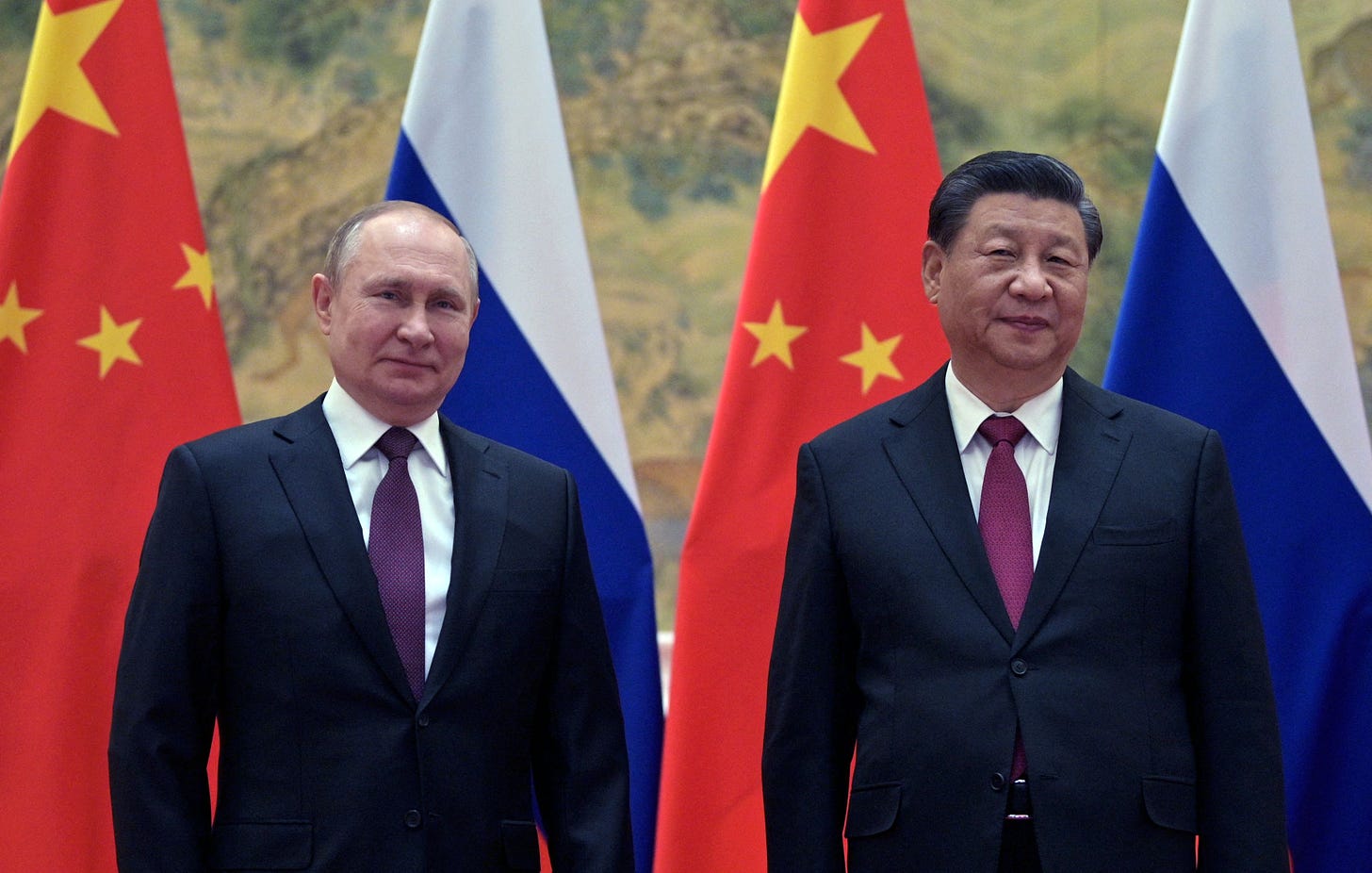The China Threat Extends Far Beyond Asia
A narrow focus on the Indo-Pacific misunderstands the CCP’s aspirations.

PRESIDENT-ELECT TRUMP’S core national security team is shaping up: He announced Rep. Mike Waltz as his national security advisor and news leaked that he intended to nominate Sen. Marco Rubio to be secretary of state. Besides experience in Congress, there’s another theme common to the two men—they’re all noted China hawks. Chilliness towards China was rightly one of the few continuities between the last Trump administration and the Biden administration, but it would be a mistake for the new team to assume that the China problem is only a China problem.
Speaking at last month’s BRICS summit, Chinese leader Xi Jinping posed a question to the assembled heads of state. “Should we allow the world to descend into the abyss of disorder and chaos, or should we strive to steer it back on the path of peace and development?” The framing of this question is notable: His ambitions are not limited to Taiwan, or the first island chain, or the Indo-Pacific region. Xi wants to reshape the world.
Days before Russia renewed its invasion of Ukraine in 2022, Xi and Vladimir Putin declared a “no-limits” “friendship.” Xi did not express regret as Russian tanks beelined for Kiev. Rather, China doubled down. Xi may have discouraged Putin from using nuclear weapons, but he otherwise threw his country’s weight behind his fellow autocrat. Not only has China propped up the Russian economy while much of the free world has sought to isolate Russia; not only has China mobilized its propaganda machine on Russia’s behalf; but it has also directly supported the Russian war effort—first by providing so-called dual-use goods, and now with explicit military capabilities.
In 2022, Russia decided to launch the biggest land war in Europe since World War II. Xi’s response: “How can I help?”
Xi is ensuring others can help as well. China has long been North Korea’s largest benefactor, accounting for some 90 percent of the Hermit Kingdom’s external trade. That, in turn, allows North Korea to afford one of the world’s largest militaries (and active nuclear weapons and missile development programs, to boot). Pyongyang has sent Russia millions of artillery shells for use in Ukraine and is now sending troops as well. For the moment, the deployment is small. But should it grow, North Korean troops could have a substantial effect in a Russian war effort that employs personnel as cannon fodder.
Iran’s support for the Russian war, mostly via the provision of drones, has received ample attention. But a peek behind the curtain once again reveals a nefarious Chinese role. In November 2022, the Institute for Science and International Security found that China was providing copies of Western components to Iran for production of drones ultimately used in Ukraine. This comes as little surprise given China’s history of supporting Iran’s ballistic missile and nuclear programs.
The European conflagration is not the only war in which China has played a role in recent years. After the horrors of October 7th in Israel, Beijing threw in its lot with Iran’s “axis of resistance.” In multiple public statements after the deadliest day for the Jewish people since the Holocaust, China refused to use the terms “Hamas” or “terrorism” and failed to even acknowledge the fact of an attack. Instead, Beijing allowed antisemitic narratives to blossom online and quickly pivoted to public criticism of Israel. In the United States, a network with links to the Chinese Communist Party was behind a demonstration in New York on October 8, 2023, and is tied to the events at Columbia University last spring.
During the BRICS summit, Xi reassured Iranian president Masoud Pezeshkian that “China will unswervingly develop friendly cooperation with Iran” regardless of international developments—presumably including efforts to wipe Israel off the map. China remains committed to the 25-year cooperation agreement it signed with Iran in 2021, in which Beijing pledged to invest $400 billion in Iran (as with Russia and North Korea, China keeps the Iranian economy afloat) and to provide the theocrats with the technological wherewithal to maintain their grip on power.
The evidence grows clearer by the day: America’s China problem is not limited to the Indo-Pacific. Its scope is the same as Xi’s ambitions, which are global. China is at the center of a web of tyrants, whom it supports as they oppress their own people and wage eliminationist wars on their neighbors. For the Chinese leader, “disorder and chaos” is precisely the point. When the smoke clears, Xi believes he will sit atop the wreckage—a new hegemon poised to reshape a destroyed world to his liking.





